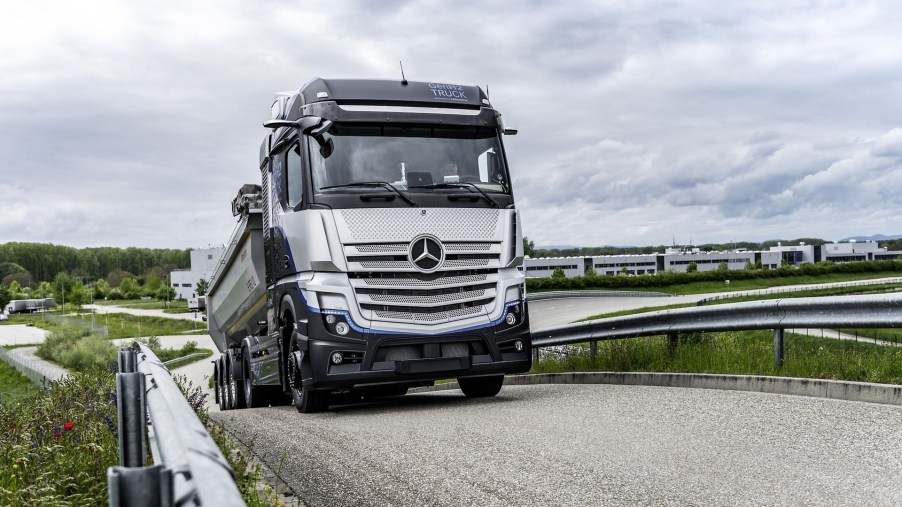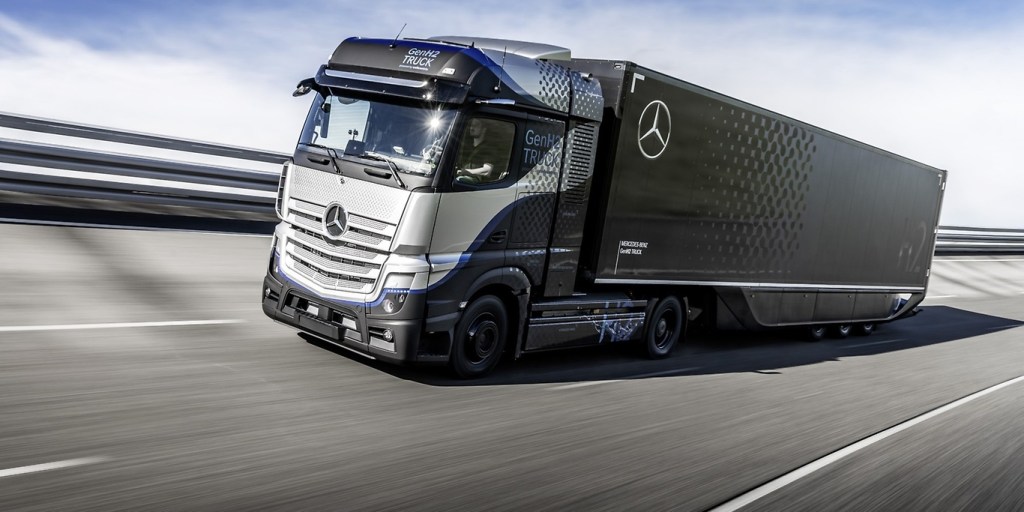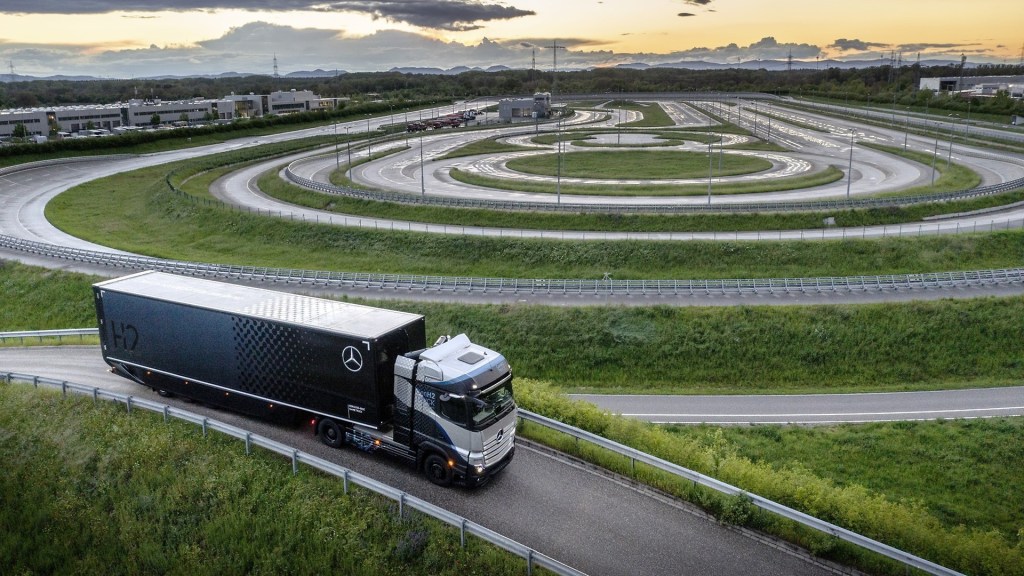
Mercedes-Benz to Roll Out Hydrogen Trucks in Europe
Mercedes-Benz has taken another step on the path toward a more sustainable future following the debut of its new EV platform. The German automaker has introduced a new plan to change the face of Europe’s semi-truck use forever. The new trucks, dubbed GenH2, are aiming for an ambitious range target of 1,000 km or roughly 600 miles. Unveiled in April of 2020, the testing phase for the new semi-truck has begun, and Mercedes sounds hopeful of the future.
Mercedes-Benz hydrogen power the way forward for Europe

Testing for new automobiles is rigorous, and even more so for semi-trucks. These trucks are the backbone of the European economy, unlike in the U.S where trains are more prevalent. Due to the lack of rail lines for freight in Europe, semi-trucks dominate and must be tested accordingly. This could mean it will be some time before the GenH2 is roadworthy.
However, it should be worth the wait. There’s much testing to be done, all of it time-consuming. Trucks are tested for a variety of situations, including adverse weather conditions. Additionally, the GenH2 is tested for continuous use and a battery of complex driving maneuvers. These tests will ensure that the trucks are indeed roadworthy, and Mercedes-Benz and parent company Daimler says the GenH2 will be tested on public roads before the year is out. However, the GenH2’s release won’t be until 2027.
The GenH2 is completely new from the ground up

RELATED: Mercedes-Benz Unveils Three Interesting Trim Levels for the 2022 C-Class
Speaking of testing, the new GenH2 prototype needs it because it is a totally new vehicle. A hydrogen fuel cell will power electric motors, which are extremely beneficial for trucking. Electric motors deliver instant torque, and lots of it, so hauling massive amounts of cargo and freight won’t be an issue for this truck. Mercedes-Benz is already putting that hauling capability to the test by having the truck perform this battery of tests loaded with up to 25 tons.
It’s time to talk about that hydrogen powerplant. It’s a unique choice, even in the realm of sustainable trucking. Tesla has shown a pure-EV truck off before. Perhaps Mercedes is worried about charge times slowing down freight traffic in Europe. Regardless, the GenH2 makes use of hydrogen for several reasons. Chief among them is just how light hydrogen cells are compared to a truck engine, closely followed. Hydrogen cells also function as a range extender for the batteries.
Shell has a part to play too

Odds are, you’ve never seen a hydrogen filling station before. This isn’t a coincidence. Fuel stations in both the U.S and Europe are few and far between, which is where Shell comes in. Shell has partnered with Mercedes-Benz to help broaden the network of hydrogen filling stations across Europe. With both companies working to push the inefficient trucks of yesteryear into the future, its possible hydrogen will start to become a more mainstream source of propulsion.


